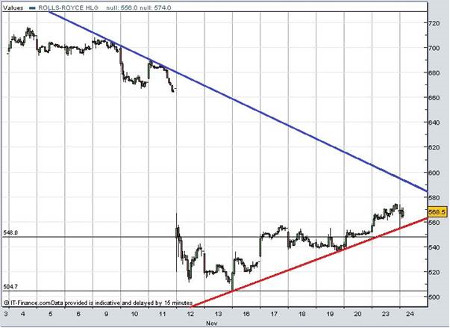Rolls-Royce gives taster of strategic review
24th November 2015 11:30
A run of profits warnings didn't stop with former chief John Rishton's exit in July. New head honcho Warren East has spent much of his first four months in charge downgrading expectations and issuing profits warnings like confetti. Turning this incredibly complicated business around will not be straightforward - Rishton tried and failed - but a strategic review, which began as soon as East hit the hot seat, also threatens to underwhelm.
At least that's the impression investors will get from a brief glimpse afforded them by Rolls Tuesday morning. We know East is keen to increase transparency by improving disclosure and simplifying the cash-hungry business. Costs will be cut and inefficiencies stripped out.
We already know that Rolls' bloated army of senior managers is for the chop and that fixed costs must fall. Rolls said in its 12 November profits warning that jobs will go at the aerospace and marine businesses, but an extra £150-£200 million of gross cost savings per annum flagged Tuesday is nothing new.

(click to enlarge)
Rolls must also be more nimble in its decision-making, a problem which affects most companies when they get to Rolls' size. "This is fundamental to ensuring Rolls-Royce best positions itself to compete for the long term opportunities before us," says East, who earlier this month moaned that the level of fixed cost and an inability to manage it is "unacceptable".
We'll get all the gory details during a webcast by top brass at 15.30-18.00 today. Chairman Ian Davis believes East recommends "clear and decisive actions", although it's difficult to tell from this statement.
Even industry commentator and Rolls fan Howard Wheeldon acknowledges that the next two years will be "torrid" for the company. "Mistakes have been made and the company is top heavy on management," he says.
What won’t change later is earnings guidance. Profit will be at the bottom end of the range in 2015 at £1.325-£1.475 billion. Next year, however, an anticipated slump in demand for spare parts used on business and regional jets - along with fewer small planes using Rolls engines - is now tipped to wipe out an extra £100 million of profit.
A switch to more fuel-efficient large planes also means less demand for older engine spares - that's a £100-£150 million hit. And the marine division will be deep underwater in 2016 as it's holed by a further £75-£100 million of lost profit.
This article is for information and discussion purposes only and does not form a recommendation to invest or otherwise. The value of an investment may fall. The investments referred to in this article may not be suitable for all investors, and if in doubt, an investor should seek advice from a qualified investment adviser.
Editor's Picks